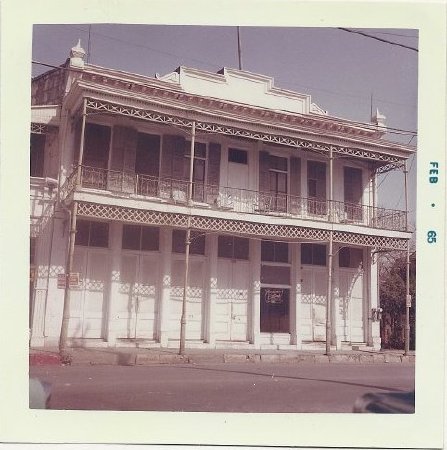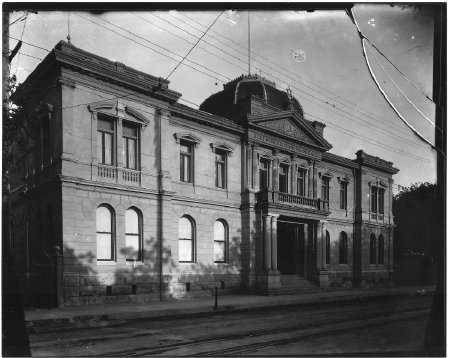Preserved in Place
History:
In addition to a wide variety of commercial enterprises, social and religious institutions had also put down neighborhood roots. Some, like the Beethoven Maennerchor and the congregation of Rodfei Shalom Temple, moved out of Germantown decades before urban renewal posed a threat, as the needs of their respective memberships changed. Other institutions, like St. Michael's Church and St. Joseph's Hall, continued to function in their original locations. All left impressive buildings behind.
About this Image:
1) Hermann Schultze built this two-story limestone store on Goliad Street in 1891 for his hardware business. Alamo Iron Works (now the site of the Alamodome) made the cast iron columns, but Mr. Schultze created the decorative tin work himself. During HemisFair, the store housed the Humble Oil Co. Pavilion and served as a tourist information center just inside Gate No. 1.
2) The Beethoven Maennerchor, one of the earliest German singing societies in Texas, built a stately concert hall on S. Alamo Street in 1895. They practiced and performed at this location until a fire damaged the building in 1913. Although the Maennerchor rebuilt the hall, they sold it shortly thereafter. It survived the widening of Alamo Street for HemisFair thanks to the perseverance of architect O'Neil Ford, but not without sacrificing its front facade and all the Italian Renaissance style stonework that made it distinctive.
2) The Beethoven Maennerchor, one of the earliest German singing societies in Texas, built a stately concert hall on S. Alamo Street in 1895. They practiced and performed at this location until a fire damaged the building in 1913. Although the Maennerchor rebuilt the hall, they sold it shortly thereafter. It survived the widening of Alamo Street for HemisFair thanks to the perseverance of architect O'Neil Ford, but not without sacrificing its front facade and all the Italian Renaissance style stonework that made it distinctive.
Credit:
Courtesy of San Antonio Conservation Society Foundation


